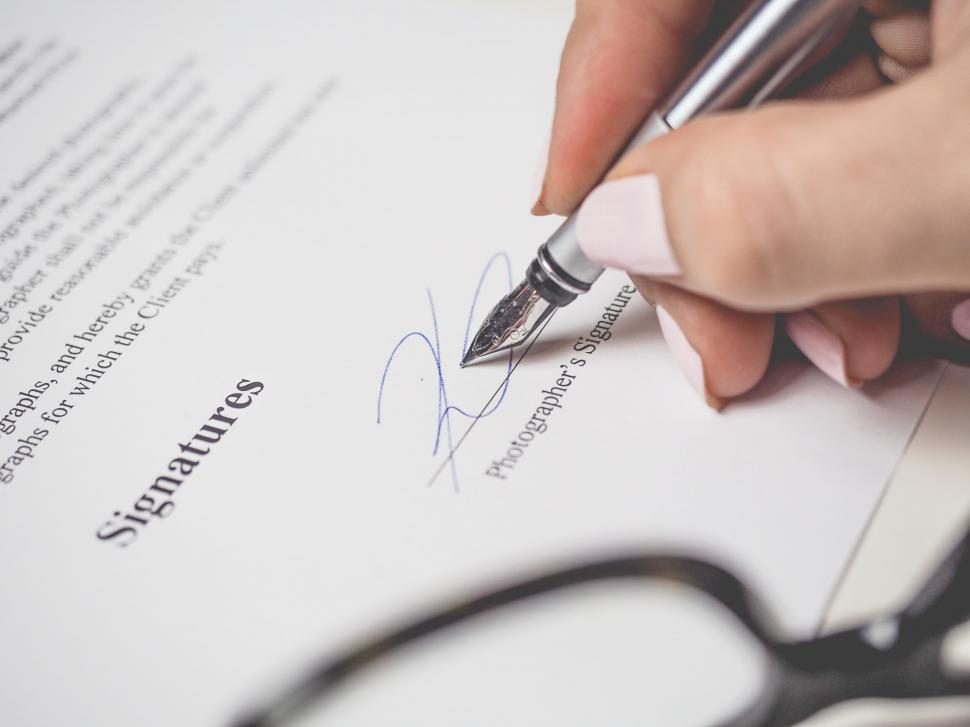Last Updated on October 28, 2025 by SLO Notary
You’d think notarization and attestation are just two fancy words for the same thing. After all, both involve signing papers, verifying identities, and stamping documents to make them official. But here’s the catch—while they share some DNA, they play very different roles in the world of legal paperwork. And if you live in San Luis Obispo County, where contracts, affidavits, and real estate deals are part of daily life, knowing the distinction can save you from unnecessary stress (and a few extra trips to your notary).
Let’s start with notarization—what really happens when a notary stamps your document?
Notarization is about authenticating a signature, not the content of the document itself. When a notary public in California notarizes something, they’re confirming that:
- The signer’s identity has been verified (usually via government-issued ID).
- The signer understands what they’re signing.
- The signer is doing it willingly—no coercion, no funny business.
The notary doesn’t vouch for the truth of the document. They simply witness the act of signing and attach their seal as a safeguard against fraud. It’s like the notary is saying, “Yes, I was here, I saw it happen, and this person is who they claim to be.”
That’s why you’ll see notarization used on loan documents, deeds, power of attorney forms, and affidavits—documents where signature authenticity is critical.
Attestation, on the other hand, goes a little deeper
Attestation is broader—it’s the act of witnessing and validating the authenticity of a document or signature, but it can involve multiple parties, not just a notary. In some contexts, attestation means a senior official, government representative, or authorized institution verifies that the document is legitimate and can be accepted abroad.
Think of attestation as a higher level of verification. For example:
- When you’re submitting academic certificates to work overseas, they may need attestation from a government authority.
- When you’re sending marriage certificates or business documents to another country, those often need to be attested before they’ll be recognized internationally.
So while notarization is local—something handled by your neighborhood notary—attestation often extends across borders, connecting governments, consulates, and official agencies.
A simple analogy—because legal jargon can get tiresome
Imagine notarization as the bouncer at the door checking your ID. They’re making sure you are who you say you are before you walk into the club. Attestation, meanwhile, is like the event organizer inside confirming that the whole party is legitimate—that the event itself is sanctioned and real.
Both are about trust, but at different layers.
Why the confusion? Blame the paperwork.
In California, notarization and attestation sometimes overlap because certain documents—especially those leaving the country—require both. You might first get your document notarized locally in San Luis Obispo County. Then, it gets sent to a state office for authentication, and finally, to a consulate or embassy for attestation.
Each step adds a layer of legitimacy, making your document more universally recognized. It’s a bit like a passport for your paperwork.
Common scenarios you’ll encounter in San Luis Obispo County
- Real estate transactions: When buying or selling property, notarization ensures signatures are verified for deeds or loan documents.
- Powers of attorney: If you’re granting someone legal authority, notarization ensures you understand and consent to it.
- International document use: If you’re moving abroad, marrying overseas, or doing international business, you’ll likely need attestation after notarization.
- Employment and education abroad: Diplomas, transcripts, and employment letters often require both notarization and attestation before being accepted internationally.
These processes sound tedious, but they’re what make legal systems run smoothly across borders.
How California handles the details
California notaries are tightly regulated by the Secretary of State. Every notarial act—whether acknowledgment, jurat, or copy certification—must follow strict rules. The notary’s seal, signature, and journal entry become part of the public record.
Attestation, however, involves higher authorities. After a California notary notarizes a document, the California Secretary of State can issue a certificate of authentication, verifying the notary’s commission. That certificate can then be presented to a U.S. Department of State or foreign consulate for attestation.
So yes—it’s a chain of trust, built step by step.
But here’s the thing—most people don’t realize they need both until it’s too late
That’s usually when panic sets in. A document gets rejected by a foreign employer or consulate, and you’re suddenly scrambling to meet a deadline. That’s why working with a local notary familiar with international document handling can make all the difference.
In San Luis Obispo County, notaries who routinely handle travel, education, or legal documents for overseas use know the sequence: notarize → authenticate → attest. Missing one step can set you back weeks.
Quick breakdown: notarization vs. attestation
| Feature | Notarization | Attestation |
|---|---|---|
| Purpose | Verifies the identity and signature of the signer | Confirms the authenticity of the document itself |
| Authority | Performed by a Notary Public | Performed by government or consular officials |
| Scope | Local or state level | National or international |
| Common Use | Legal forms, deeds, affidavits | Diplomas, business, or legal documents for overseas |
| Process | Single step | Often multi-step, involving several agencies |
A quick local tip for San Luis Obispo residents
If you’re planning to study, work, or move abroad—start your document process early. Reach out to your notary first to ensure your forms are completed correctly. Many local notaries, especially mobile ones, can help guide you through the notarization and refer you to the right office for attestation.
Why this distinction matters more than people think
It’s easy to assume all stamps look the same and serve the same function. But in legal and international contexts, using the wrong one can cause major delays. Understanding whether your document needs to be notarized, attested, or both helps ensure it’s accepted wherever it’s going.
In short, notarization gives your signature credibility. Attestation gives your document global validity.
The bottom line
Both notarization and attestation play their part in ensuring trust and legality—but they operate in different spheres. One validates the signer; the other validates the document. If you’re in San Luis Obispo County and unsure which process applies to you, it’s worth consulting a notary familiar with international paperwork. A few minutes of guidance today can save you a mountain of paperwork later.




